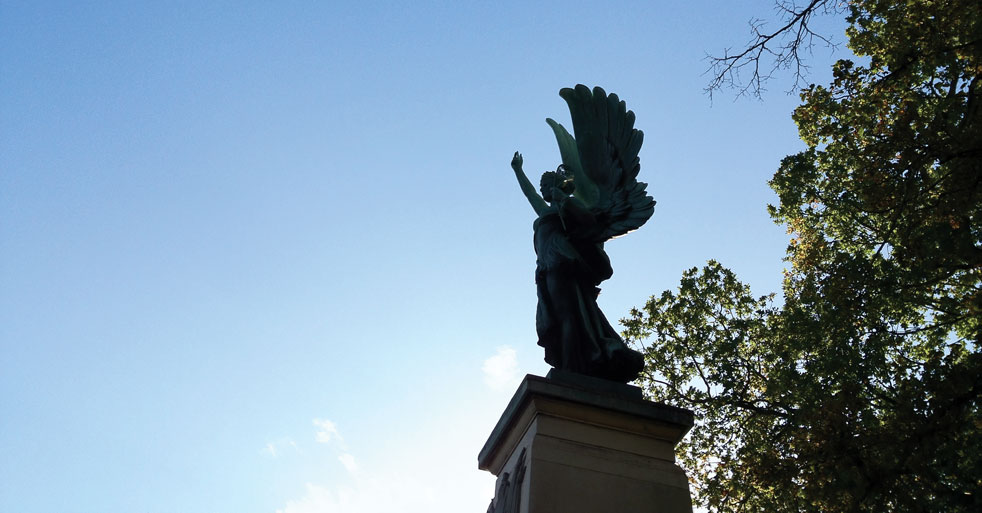A talk about local war memorials was due to take place at the Woodford and District branch of the National Trust this month. As with many events, this is likely to be cancelled. So we invited Richard Speller to talk here about Wanstead’s own monument of remembrance. Photo of the Wanstead War Memorial by Geoff Wilkinson
Due to the appalling death toll suffered in the 1914–1918 Great War, virtually every family in the land would have known of someone who had lost their life. Thus, within a very short period, war memorials of every different type – stone pillars, statues, windows, plaques – were erected all over the country. These were, in the main, funded by local communities.
Of course, these memorials not only list those who died in the First World War but also the second (1939–1945) and beyond, and the Wanstead memorial commemorates Marine Tom Curry, who lost his life in Afghanistan in 2007.
War memorials, as we know them, only really started appearing after the Crimean War in the 1850s. Prior to that, sadly, participants who had been killed were buried in mass graves without any identification at all.
The movement gathered pace following the Boer wars, primarily due to far greater and faster communication regarding the events and compassion within the population.
The Imperial War Museum considers there to be over 100,000 memorials in Great Britain, of which approximately 40,000 are listed.
Wanstead was part of this movement. The memorial on the High Street – on a small detached fragment of Epping Forest, known locally as Tarzy Wood – was unveiled on 30 April 1922 by local dignitary and businessman Sir James Roll, who had been Lord Mayor of London the year before.
The main feature of the Wanstead War Memorial is the winged figure of Victory or Peace, sculpted by Newbury Trent, who also produced the figure of the soldier on the Ilford War Memorial. There are 198 names listed, but local research shows the true figure of the losses in Wanstead was nearer 320. The memorial inscription reads: “Men of Wanstead, whom their neighbours hereby commemorate, here numbered among those who in the Great War at the call of king and country left all that was dear to them, endured hardship, faced danger and finally passed out of the sight of men by the path of duty and self-sacrifice, giving up their own lives that others might live in freedom. Let those who come after see to it that their sacrifice was not in vain.”
War memorials in this country are the responsibility of the local authority, and the London Borough of Redbridge has an excellent website under the Redbridge Museum detailing and illustrating a very large number of these in the area. In addition, the charity War Memorials Trust does fine work in helping to identify and list memorials as well as provide expert help and grants to maintain them. It is worth remembering that most war memorials are approaching 100 years in age.
Should you wish to discover more, visit the War Memorials Trust website or come along to my talk this month.
For more information on the War Memorials Trust, visit warmemorials.org
For more information on Redbridge’s war memorials, visit wnstd.com/memorials




